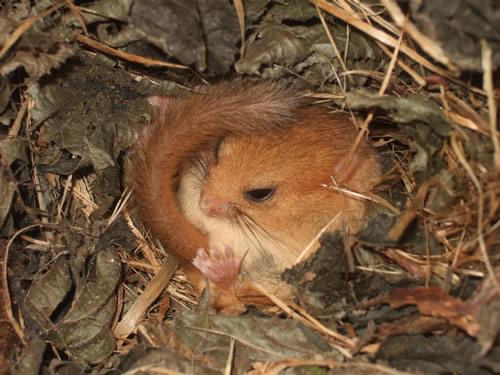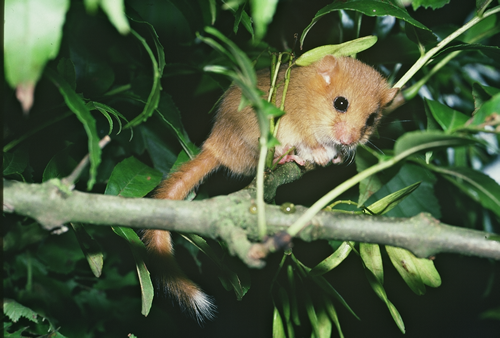
The People’s Trust for Endangered Species (PTES), together with Natural England, officially launches the third Great Nut Hunt today, a public survey to help save endangered hazel dormice (Muscardinus avellanarius). The conservation charity is calling on the public to search their local woodlands for tell-tale signs of gnawed hazel nuts to help determine the distribution status of this rare mammal. To encourage would-be ’nutters’ to take part in the survey, PTES is hiding 21 specially-commissioned hazel nuts - 20 solid silver nuts and a single gold-plated nut - across counties in England and Wales to celebrate the 21st anniversary of the National Dormouse Monitoring Programme (NDMP).
Jill Nelson, Chief Executive PTES said: "Once widespread in the UK, the dormouse is now an endangered species and vulnerable to extinction. Nationally they have disappeared from more than half of their historic range due to the loss and fragmentation of their habitat, particularly hedgerows, as well as their sensitivity to climate change. In addition to being so rare, the small dormouse is an elusive, nocturnal, arboreal, hibernating mammal, making it a difficult creature to spot."
Dr Pat Morris, Chief Nutter and dormouse expert explains: "The best indicator of a dormouse’s presence is opened hazel (Corylus avellana) nut shells on the woodland floor. Dormice open these nuts by making a neat round hole on one side, leaving characteristic toothmarks around the edge of the hole and providing a reliable method for identification. We can make use of these nibbled nuts to gather data about the presence or absence of dormice and improve knowledge about the distribution of the species as well as the general health of our woodlands and hedgerows." Dr Morris is dubbed the Chief Nutter because he will oversee the herculean task of identifying the tens of thousands of hazel nuts PTES hopes will be sent in by the public.
Poul Christensen, Acting Chair of Natural England, said: "The dormouse is one of our best-loved mammals, but it has faced real difficulties in recent years as its favoured woodland habitats have steadily disappeared or fallen into neglect. The Great Nut Hunt is the ideal way for people of all ages to have fun discovering more about dormice and how they live, but it can also really make a difference to dormouse conservation. By helping us build up a picture of where and how well dormice are surviving we can take steps to ensure their long term survival".

Nutty numbers
1 The single gold-plated hazel nut being hidden in England or Wales by PTES
16 The number of successful reintroductions of dormice across 12 English counties over the last 16 years
20 The number of solid silver hazel nuts being hidden across England and Wales by PTES
21 The number of years the National Dormouse Monitoring Programme has been assessing the conservation status of dormice populations in Great Britain
39% The decline in dormouse numbers between 1992 (the first year there were sufficient records to begin population analysis) and 2008
60 The number of new dormouse sites discovered by volunteers during the 2001 Great Nut Hunt survey
500 The number of previously unknown woodlands that had dormouse present across England and Wales that were discovered through the first two nut hunts
800 The total number of known dormouse sites nationwide
13,171 The number of nuts submitted to PTES for verification in the 1993 Great Nut Hunt survey
50,000 The number of nuts checked by the Chief Nutter to identify which animals opened them in the 2001 Great Nut Hunt survey
250,000 The number of found nuts PTES hopes to exceed in the third Great Nut Hunt
To take part in the Great Nut Hunt and receive your free survey pack, call 020 7498 4533 or visit www.greatnuthunt.co.uk . Survey packs contain more information about the silver and golden nut prizes, species information about the hazel dormouse, a recording form and guides on how to identify hazel tress and nibbled nuts.
